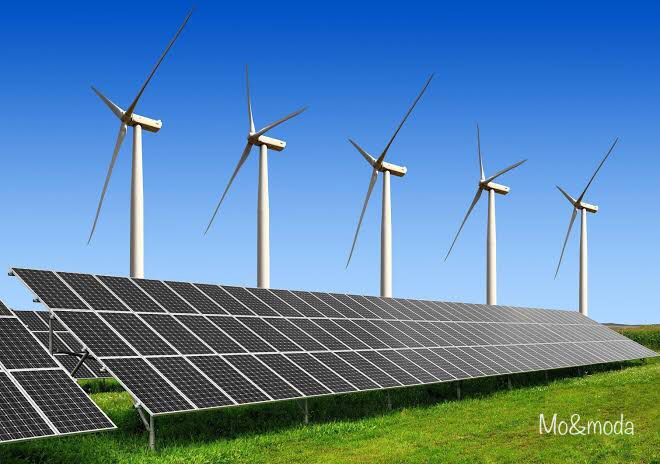Electricity generation from wind and solar energy reached a record level, representing 12 percent of global electricity production last year, up from 10 percent in 2021.
A document issued by the independent studies organisation Ember, involved with climate and power affairs, stated that remaining yr may also have witnessed a height in emissions from the strength area, that’s the world’s largest supply of carbon dioxide emissions that reason international warming.
Ember studied electricity region information from 78 international locations in its annual report on strength in the global, representing ninety three percent of world strength call for.
The report found that renewables and nuclear mixed accounted for a 39 percentage share of world power manufacturing closing 12 months, with the percentage of solar energy growing by way of 24 percent and wind energy by way of 17 percent as compared to the previous yr.
Growth in electricity generation from solar and wind energy met 80 percent of the increase in global electricity demand in 2022. Electricity generation from coal-fired plants increased by 1.1 percent, while electricity generation from gas-fired plants declined by 0.2 percent due to the rise in electricity generation from coal-fired plants. Fuel prices.
Even though carbon dioxide emissions from the electricity zone rose via 1.3 percentage final year, elevated reliance on wind and solar energy contributed to slowing the pace of the rise. The document said that if all of the power generated from wind and solar strength got here from fossil fuel-powered vegetation, strength quarter emissions could be 20 percentage better in 2022.
The file said that eu Union countries lagged at the back of in increasing wind strength era. Closing yr, wind strength generation inside the Union grew by means of 9 percent on an annual foundation, that is, less than the worldwide average boom of 17 percent. On account that Russia sharply decreased gas supplies to the ecu Union ultimate 12 months, Brussels and capitals have again and again pledged to speed up approval techniques for renewable power era to reinforce ability faster.
Ember says Germany is a “world leader” in deploying onshore wind energy, but in the years 2017-2021, it installed on average a third of the capacity it added annually in the four years before that.
Solar power generation grew by 24 percent in the European Union in 2022, in line with the global average, the report said.
Inside the united states, wind power technology grew by way of 15 percentage and solar strength era by means of 25 percentage in 2022 as compared to the previous yr.
Despite slow expansion, EU countries still meet a larger share of their energy demand through renewable energy than other regions. Energy generated from wind and solar reached 22 percent in the European Union last year, compared to 12 percent globally and 15 percent in the United States.
Coal is the main source of electricity generation
Despite the record high share of wind and solar sources in electricity generation around the world, fossil fuels still dominate, reaching 61% in 2022.
The share of coal inside the global strength mix reached 36%, equivalent to ten,186 terawatt-hours, accompanied with the aid of herbal gasoline at 22% (6,336 terawatt-hours).
Coal-fired electricity generation rose 1.1%, in line with average growth over the past 10 years, as the energy crisis did not lead to a significant increase in the burning of fossil fuels as initially expected.
In contrast, electricity generated by natural gas decreased slightly by 0.2% over the past year, with gas prices rising to historic levels.
Last year witnessed the addition of 31 gigawatts of gas-fired power plants, which is the lowest level in 18 years, while coal station closures recorded the lowest number in 7 years.
Peak electricity emissions
The growth in the proportion of wind and solar contributes to slowing the pace of the rise in carbon emissions from the power place. Without these renewable assets, emissions could have jumped by means of manner of 20% at some stage in 2022, but they rose with the resource of simplest approximately 1.3%.
Growth in electricity generation from wind and solar energy achieved 557 terawatt-hours, representing 80% of the growth in global electricity demand in 2022, which amounts to 694 terawatt-hours.
Based on the above, Ember analysts believe that electricity sector emissions are expected to have peaked last year.
Clean energy growth is expected to outpace electricity demand in 2023, the first time this has happened outside of economic downturns.
